
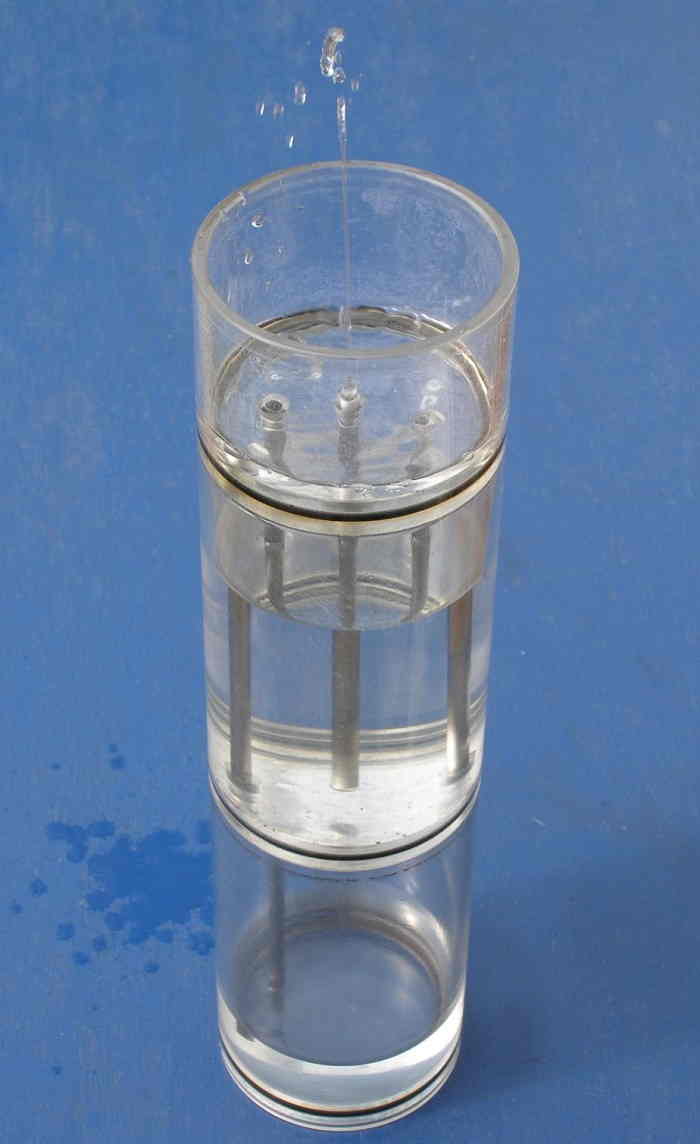
Heron's Fountain, also known as Hero's Fountain, is an ancient hydraulic device attributed to Heron of Alexandria, a Greek engineer and mathematician who lived in the first century AD. This ingenious invention demonstrates the principles of fluid dynamics and is considered one of the earliest examples of a working fountain powered by air pressure and the displacement of water.
Heron's Fountain consists of three interconnected chambers or containers. The lowermost container is filled with water, while the middle container is situated above it and features a pipe or tube that extends from its base into the lower container. The upper container has an opening at the top, allowing air to enter. When water is added to the lower container, it begins to flow into the middle container due to gravitational forces. This water flow creates a partial vacuum in the upper container.
As the water level in the middle container rises, it eventually reaches a critical point where the pressure difference between the upper and lower containers becomes significant. Air is then drawn into the upper container through the opening, and this compressed air forces water out of the top container through a jet, creating a continuous and seemingly self-sustaining stream of water.
Heron's Fountain is an impressive testament to ancient engineering and the understanding of fluid dynamics, showcasing Heron's innovative thinking and practical applications of science in his time. It also serves as an early example of a water fountain and a precursor to more modern hydraulic systems.
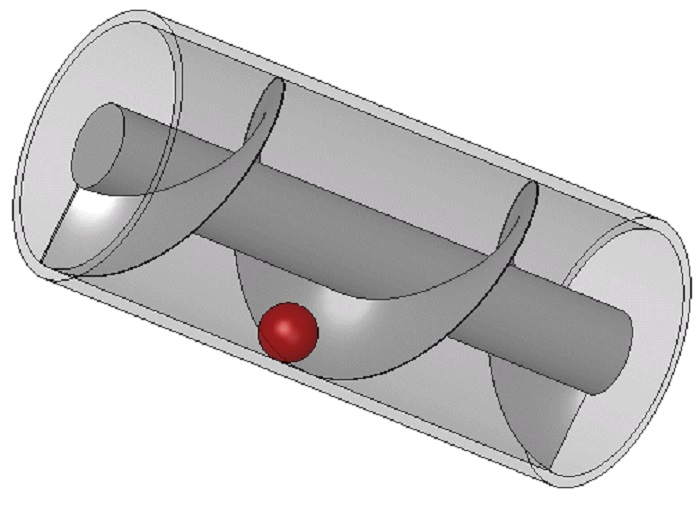
Archimedes’ Screw is an amazing ancient engineering invention that was used to transfer water from a low-lying body of water into irrigation ditches. This invention was originally attributed to Archimedes, a famous ancient Greek mathematician, engineer, and inventor from the 3rd century BC. However, evidence suggests that the screw had been developed and used in Egypt as early as the 6th century BC. Essentially, the Archimedes’ Screw is a long cylindrical tube made of wood or metal, with an opening at one end and a slanted screw-like thread on the inside walls. As this screw is rotated, it was able to draw water up from a lower level and push it up a pipe to a higher level. This was accomplished by the screw-like threads on the inside of the tube, which allowed the water to be moved up the pipe in small increments as the screw was rotated.
The invention of the Archimedes’ Screw enabled ancient engineers to move large amounts of water from one location to another, which in turn allowed for the expansion of agriculture and irrigation systems. This allowed for more efficient crop production, which in turn, led to an increase in the food supply and population growth. The Archimedes’ Screw was also used to lift heavier objects, such as stones, from one location to another. This was done by affixing the screw to a solid base, and then connecting a pulley system to the screw. The object to be lifted was placed on the end of the screw, and as the screw was rotated, the object would be lifted up. The Archimedes’ Screw is an amazing example of ancient engineering, and it is still in use today in some parts of the world. It is a testament to the ingenuity of the ancient engineers and inventors who created this device, and it is a reminder of their remarkable achievements in the field of engineering.

The Showers of Pergamum were a complex and innovative water supply system in the ancient city of Pergamon (modern-day Bergama in Turkey), which is believed to have existed during the Hellenistic and Roman periods. This sophisticated network of aqueducts and tunnels served as a remarkable solution to the city's water needs, enabling it to access fresh water sources from the surrounding hills and ensuring a reliable supply for its inhabitants.
The Showers of Pergamum were renowned for its intricate design, which included tunnels, underground canals, and various reservoirs. Water was collected from natural springs in the hills and channeled through a system of aqueducts, carefully engineered to maintain a consistent and sufficient flow of water. The aqueducts descended into the city and, at various points, led to a series of ornate fountains and basins, where the water was made accessible to the public for drinking and various domestic purposes.
The most distinctive feature of the system was its ability to create a natural shower effect by allowing water to flow over a series of step-like terraces in the fountains. The flowing water created an aesthetically pleasing and functional way for the city's residents to enjoy public baths and refresh themselves, particularly in Pergamon's Mediterranean climate.
The Showers of Pergamum not only served practical purposes but also represented the technological and engineering prowess of the time. Its historical significance lies in its demonstration of how ancient civilizations were able to harness natural resources and employ advanced engineering techniques to meet the needs of urban populations. Today, the ruins of Pergamon and remnants of this remarkable water supply system are a testament to the ingenuity of the people of the Hellenistic and Roman eras.
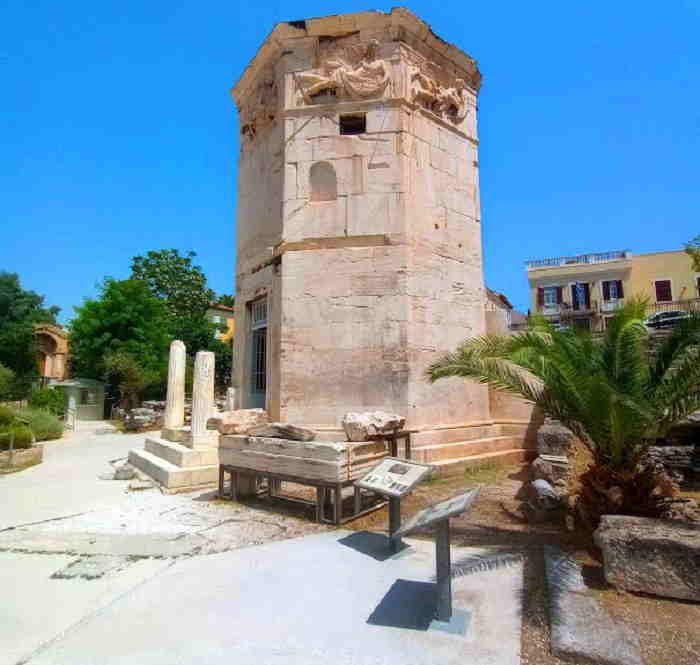
The Tower of the Winds, also known as the Horologion of Andronikos Kyrrhestes, is an ancient timekeeping and weather station located in the Roman Agora of Athens, Greece. It stands as a fascinating testament to the advanced engineering and scientific knowledge of the Hellenistic period. This octagonal marble structure was constructed around the 1st century BC, during the time of the Roman Empire.
The Tower of the Winds is an architectural marvel, standing at 12 meters (about 40 feet) in height. Each of its eight sides features a frieze representing one of the eight principal wind deities from Greek mythology, from which it derives its name. Additionally, the tower was adorned with sundials on each side, allowing it to function as a sundial clock, telling time through the position of the sun's shadow.
Inside the tower, there was a water clock, or clepsydra, which marked time through the regulated flow of water. This made it one of the earliest known examples of a combined sundial and water clock system.
The Tower of the Winds had a significant impact on the development of horology and meteorology, providing valuable insights into ancient Greek concepts of timekeeping and weather forecasting. It demonstrated a holistic approach to science, integrating art, architecture, and astronomy.
Today, the Tower of the Winds stands as one of the best-preserved ancient structures in Athens and serves as a striking reminder of the remarkable achievements of ancient Greek civilization in the fields of science and architecture. It also highlights the enduring fascination with time and weather measurement throughout human history.
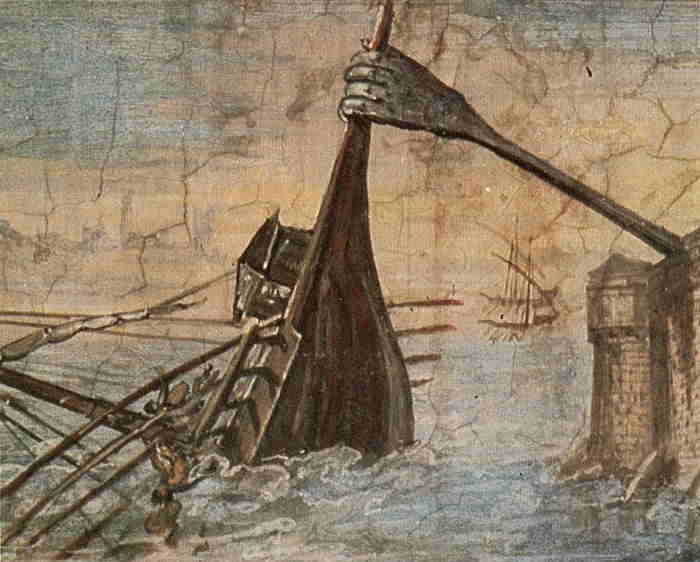
Archimedes's Claw was a remarkable lifting device attributed to Archimedes, who lived in the 3rd century BC in Syracuse, a Greek city-state in Sicily. This invention was designed to assist in lifting heavy objects, particularly for use in construction and engineering projects. The device consisted of a system of pulleys and cables, often operated by human or animal power, to provide a mechanical advantage for lifting objects.
One of the most famous stories associated with Archimedes and his claw involves its use in defending the city of Syracuse against Roman forces during the Siege of Syracuse in 214-212 BC. According to historical accounts, Archimedes's Claw was used to lift and manipulate Roman ships, causing considerable damage and disruption to the Roman fleet. This ingenious invention showcased the power of simple machines in both construction and warfare.
The design of Archimedes's Claw, which utilized the principles of leverage and mechanical advantage, was a testament to Archimedes's deep understanding of mathematics and engineering. His contributions to the field of mechanics and invention of devices like the Claw demonstrated the practical applications of mathematics and the power of simple machines in ancient times. Archimedes's legacy in science, mathematics, and engineering continues to be celebrated, and his claw remains a symbol of his innovative genius.
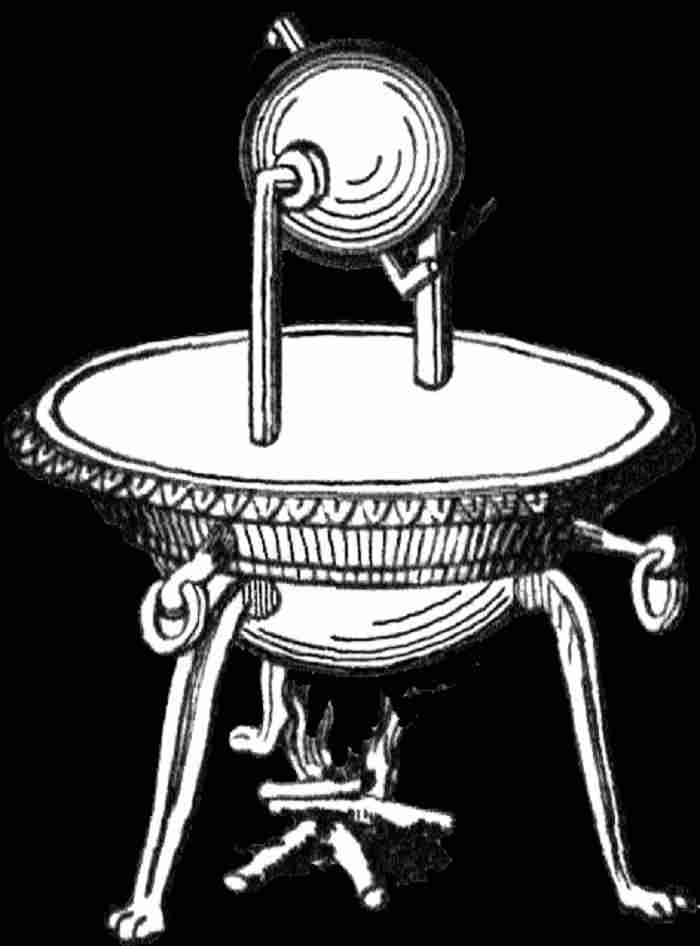
The Aeolipile, also known as Hero's engine, is an ancient steam-powered device attributed to Heron of Alexandria, a Greek engineer and mathematician who lived in the 1st century AD. It is considered one of the earliest examples of a steam engine or turbine in history and a significant precursor to modern steam engines.
The Aeolipile consists of a hollow sphere or vessel with one or more bent tubes attached to it. The sphere is mounted on a central axis, allowing it to rotate freely. Water is heated in the sphere, typically by an external heat source such as an open flame or an enclosed chamber, until it vaporizes and produces steam. The steam then travels through the bent tubes, which act as nozzles, and is expelled out in opposite directions.
The principle behind the Aeolipile's operation is Newton's third law of motion, which states that for every action, there is an equal and opposite reaction. As the steam escapes through the nozzles, it creates a jet propulsion effect, causing the sphere to spin rapidly on its axis. The rotation continues until the heat source is removed or the steam supply is exhausted.
The Aeolipile is a remarkable demonstration of the power of steam as a source of mechanical energy. While it had no practical applications in its time, it laid the conceptual foundation for the development of steam engines in the industrial revolution, many centuries later.
Heron's invention remains a testament to the innovative thinking and scientific curiosity of ancient engineers and thinkers. Although it was not widely adopted or further developed in antiquity, the Aeolipile played a pivotal role in the eventual evolution of steam power and its transformative impact on the modern world.
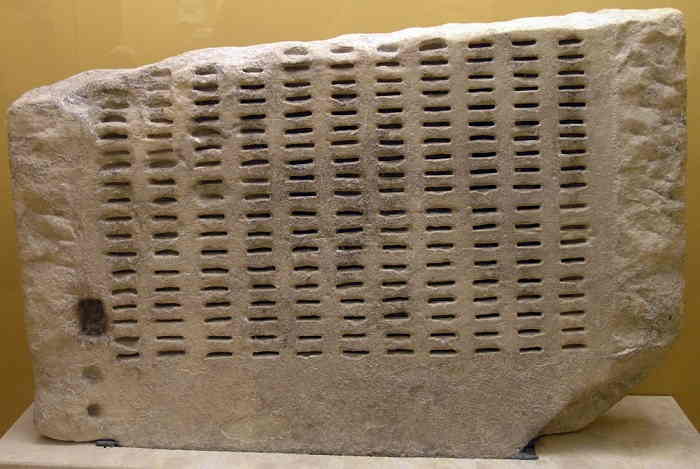
The Kleroterion was an amazing ancient engineering feat that was used in ancient Greece to ensure fair representation in government. It was a mechanical device that was used to randomly select citizens to serve on juries or in other government positions. The device consisted of a large rectangular grid with rows and columns of pegs. Each peg was marked with the name of an eligible citizen and the device was then used to randomly select citizens to serve. The Kleroterion was an impressive engineering feat for its time, as it was able to accurately and reliably select citizens at random. It was built using advanced engineering techniques and employed a number of innovative and impressive features. For example, the pegs were arranged in rows and columns, allowing for a wide range of possible selections. The device also featured a rotating wheel that could be used to spin the pegs, allowing them to randomly select a citizen. The Kleroterion was an important tool for ensuring fair representation in government and was used extensively in ancient Greece. It was an important symbol of democracy, as it allowed citizens to be selected to serve on juries and in other positions based solely on their qualifications, rather than their class or wealth. The device was a testament to the advanced engineering capabilities of the ancient Greeks and is a reminder of the importance of fair representation in government.
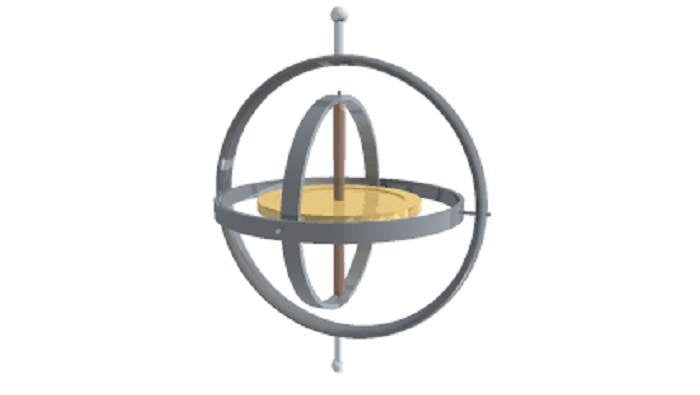
Philo's gimbal, also known as the "Philo mechanism," is an ancient invention attributed to Philo of Byzantium, a Greek engineer and author who lived around the 3rd century BC. This mechanical device is considered an early precursor to the modern gimbal, a pivoted support structure that allows an object to remain level and stable, regardless of the motion of its base.
Philo's gimbal consisted of a set of interconnected rings or frames, with the innermost ring designed to hold an object or container, while the outer rings allowed for rotation along multiple axes. The ingenious design of the device allowed the inner container to maintain its horizontal orientation, even when the outer rings were rotated or subjected to changes in motion.
One of the most notable uses of Philo's gimbal was for oil lamps or lanterns used in ancient times, particularly on ships. By suspending the lamp within the gimbal mechanism, it remained steady, regardless of the ship's movements, thus preventing oil spills and ensuring a reliable source of light.
Philo's invention was an early application of the principles of stability and balance, and it had a significant impact on various fields, including maritime navigation, astronomy, and later developments in engineering. The gimbal concept has been integral in modern devices like compasses, gyroscopes, and camera stabilization systems. Philo's gimbal is a testament to the enduring legacy of ancient Greek innovation and the practical applications of early mechanical engineering.
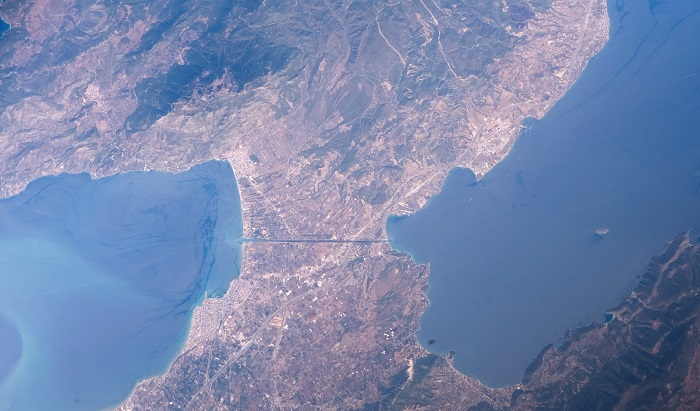
The Diolkos was an ancient transport system located in Greece, specifically in the Isthmus of Corinth, which is the narrow strip of land that connects the Peloponnese Peninsula with mainland Greece. This ingenious infrastructure was designed for the purpose of transporting ships across the isthmus, allowing them to avoid the treacherous journey around the southern tip of the Peloponnese. The Diolkos played a pivotal role in facilitating maritime trade and travel in the ancient world.
The Diolkos consisted of a stone-paved road or track on which ships were mounted or placed. It ran for approximately 6 kilometers (3.7 miles) across the isthmus, connecting the Saronic Gulf to the Corinthian Gulf. The ships were mounted on wheeled carts or cradles, and a team of men and possibly draft animals, such as mules, would then haul them across the road to the other side. The process was arduous and required careful coordination to ensure the safety of both the ships and the transport crew.
The origins of the Diolkos date back to the 6th century BC and continued to be used for many centuries, allowing ships to avoid the dangerous voyage around the Peloponnese. This innovation greatly facilitated trade and communication between the eastern and western Mediterranean, contributing to the prosperity of ancient Greek cities such as Athens and Corinth.
The Diolkos was a testament to ancient engineering and logistical prowess, serving as a critical link in the transportation infrastructure of the time. It also demonstrates the significance of geographic factors in shaping trade and communication routes in antiquity.

The Antikythera Mechanism is one of the most enigmatic and sophisticated artifacts from the ancient world. Discovered in 1901 in the wreckage of an ancient shipwreck off the coast of the Greek island of Antikythera, it dates back to the 2nd century BCE and is often described as the world's first analog computer.
This remarkable device is a complex, bronze, gear-driven mechanism with multiple interlocking gears and dials. It was designed to track and predict astronomical positions, such as the positions of the sun, moon, and planets. It could also predict solar and lunar eclipses and may have had other functions, including possibly tracking important athletic events.
The Antikythera Mechanism is a testament to the advanced state of Greek engineering and astronomical knowledge during the Hellenistic period. Its intricate gears and dials indicate a level of technological sophistication previously unknown for that era. It is sometimes called the "world's first computer" because it could perform mathematical calculations to predict celestial events with remarkable accuracy.
The mechanism remained a mystery for many years until modern X-ray and imaging techniques revealed its inner workings and provided insight into how it functioned. The Antikythera Mechanism represents an extraordinary blend of science and engineering and highlights the ancient Greeks' fascination with the cosmos and their remarkable ability to translate that curiosity into a practical, working device.